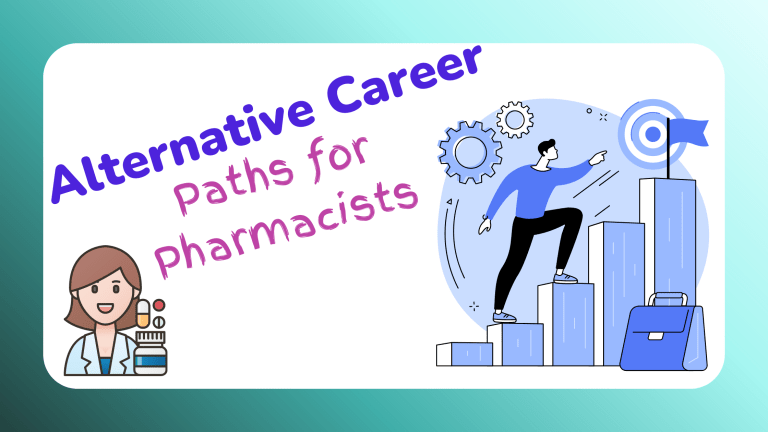10 Essential Steps to Launch a Career in Pharmacovigilance: Online Courses and Certifications
10 Steps to Start a Career in Pharmacovigilance: Online Courses and Certifications
Introduction
Pharmacovigilance is an important part of the pharmaceutical industry. It makes sure medicines are safe and work well after they’re sold. This field is all about finding and stopping bad effects from drugs. More people are needed in pharmacovigilance, so now is a great time to think about starting a career in it. This guide will show you the steps to take to have a successful career in pharmacovigilance. It includes using online courses and certifications to help you learn more.
Step 1: Know What Pharmacovigilance Is
Pharmacovigilance helps keep drugs safe and protects public health. People working in this field collect and look at data from doctors and patients to find risks linked to medicines. They also assess the risks and benefits of drugs, update safety profiles, and report bad reactions to authorities.
There are two types: clinical and non-clinical pharmacovigilance. Clinical pharmacovigilance works closely with research teams to keep patients safe during trials. Non-clinical pharmacovigilance watches over drugs that are already in the market.
Step 2: See If It’s Right for You
To be good at pharmacovigilance, you need special skills. You should be good at thinking carefully, paying attention to details, and know pharmaceutical rules well. You must also communicate well and work with teams.
You can use self-assessment tools to see if this field suits you. It’s important to be really interested in drug safety because this will drive your career.
Step 3: Get the Right Education
You usually need a degree in pharmacy, life sciences, or something similar to start in pharmacovigilance. More advanced degrees, like a master’s or Ph.D., can help you know more and get better jobs. If you’re moving from another field, look for entry-level courses in pharmacovigilance.
Step 4: Pick the Right Online Courses
In this field, you always need to learn more. Online classes are great as they are flexible and taught by experts. Choose courses that are recognized and have good reviews.
Good platforms for these courses are Coursera, Udemy, and edX. Some top courses are:
1. Pharmacovigilance Foundations Course
2. Drug Safety and Pharmacovigilance Training
3. Basics of Regulatory Affairs
4. Medical Writing for Pharmacovigilance
5. Introduction to Pharmacokinetics and Pharmacodynamics
Step 5: Get Certifications
Certifications make your resume stronger and show employers that you know your stuff. They can help you stand out when looking for a job. Some known certifications are:
1. Certified Pharmacovigilance Professional (CPP)
2. Drug Safety Associate Certification
3. Certified Clinical Research Associate (CCRA)
4. Professional Diploma in Pharmacovigilance
Study well for these exams and consider joining prep courses. Regular study sessions will help you be prepared.
Step 6: Get Practical Experience
Real-world experience is crucial. Look for internships or volunteer work in pharmaceutical companies to learn more.
Network with professionals to find these opportunities. Go to industry conferences, join online forums, and connect with people on LinkedIn to widen your network.
Step 7: Learn Technical Skills
Pharmacovigilance uses a lot of software and tools. Learn systems like Argus, ArisG, and Oracle Safety to be better at your job. Data analysis skills are also important. Take data science or software training courses to improve and grow your career.
Step 8: Build a Network
Networking can help your career in pharmacovigilance. Join groups like the Drug Information Association (DIA) and the International Society of Pharmacovigilance (ISoP).
Go to industry events and webinars to stay updated and meet mentors or fellow workers. A strong network can give you guidance and opportunities.
Step 9: Apply for Jobs the Smart Way
When applying for jobs, create a great resume that shows your experience, skills, and education. Customize it for the specific job you want.
Common job roles are Drug Safety Associate, Pharmacovigilance Officer, and Safety Specialist. Learn about these jobs to prepare for interviews better. Practice interview questions and show examples of your skills and achievements.
Step 10: Keep Learning Forever
The pharmaceutical industry is always changing, as are the rules for drug safety. To stay competitive, you need to keep learning. Read industry journals, go to seminars, and always look for more training or certifications. Keep improving and you’ll keep being a valuable team member.
Conclusion
Starting a career in pharmacovigilance means getting the right education, skills, networking, and continuous learning. By following these ten steps, you’re setting yourself up with the knowledge and experience needed to succeed in this rewarding field. Whether you’re new to this or wanting to switch careers, there are lots of resources, like online courses and certifications, to help you make sure drugs are safe and work well.






